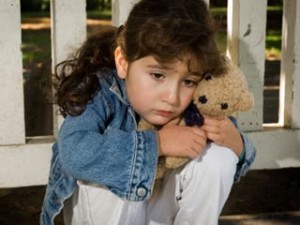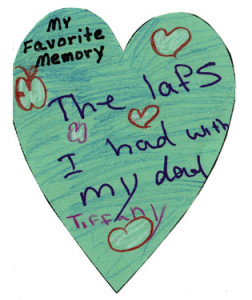Helping Children Say Goodbye
In almost every loss, there is an affected child—or children. When adults are in the midst of taking in the news and making the many decisions that arise, it may be hard for them to maintain awareness of the needs of the children in the family.
At times of tragedy, parents and many professionals feel a strong impulse to protect children from what is happening. Usually, families are thinking about this decision for the first time, so it is valuable to share some of the following information about children’s grief. However, it is important not to expose children to experiences that they may be too young to understand and these recommendations will not apply to most children under the age of four years.
- Children are typically very clear about their preferences; when they wish to say goodbye, with appropriate support, it is a constructive experience. Equally, a child who expresses reluctance should not be pressured.
- Being left out can leave children with a lifetime of regret and recriminations, especially if the child has expressed a wish to be present.
- Children’s fantasies about what they are not permitted to see are often much more gruesome and frightening than the reality.
- Preparation allows the child to voice questions and fears and have them answered.
SUGGESTIONS FOR PREPARING A CHILD TO SAY GOODBYE
STEP ONE
Share information with the parents about the benefits of inclusion for children and describe the recommendations for preparing children. Offer your assistance but remember it is the parent’s decision to make. If parents do not wish to include their child, respectfully ask if there is any other way you can help.
STEP TWO
If parents accept your assistance:
- Sit with the child and his/her parent(s) and explain the option to say goodbye in age-appropriate language. Assure the child that the doctors and nurses have done everything they can, but haven’t been able to make their loved one better.
- Talk about the grown-ups being sad and upset… ask if that is hard.
- Ask the child whether s/he would like to say goodbye; say that you and their parent(s) will be with them and that they can leave as soon as they would like to.
- Use the “Some children…” technique to ascertain how they are feeling. (“Some children worry that it would be scary… what do you think?”)
- If the child chooses to say goodbye, use age appropriate language and describe the room, equipment, smells, noises, and (most important) what their loved one will look like.
- Check back with the child: “Now I have told you all about it, would you still like to say goodbye?”
- Some children change their minds at this point. If this happens, reassure them that it is good that they are making their own decision and offer the options of drawing a picture or sending a message to their loved one.
STEP THREE
When children say “yes”:
- Together with the parent(s) accompany the child into the room. It is important not to displace the parent(s) at this sensitive time. Additionally, it can be very helpful to parent(s) to hear how you talk with their child about painful topics.
- Point out to the child the things that you described (see STEP TWO, FIFTH BULLET). Go through all the senses (what do they see? hear? smell? etc.). Ask what else they are noticing and whether they have questions.
- Encourage them to talk to their loved one, to touch him or her as appropriate, and say goodbye.
- Again ask if there are any more questions.
Essential final steps:
- Sit down with child and parent and ask whether you did a good enough job of explaining everything. Did you leave anything out? Was anything worse than expected?
- RESTORE THE LIVING MEMORY: Ask the child to tell you about a time they had fun with their loved one. Ask about ordinary details (but try to go through all the senses to reinforce the memory): What did they do? What did they eat? What was the weather like? What did it sound like? Smell like? Look like? (all the colors) Did they laugh a lot together? Say how wonderful it sounds and that you understand how much they will miss their loved one “but you will always keep them and these memories in your heart.”
- To reinforce this message with younger children, make gathering motions with your hands (as though capturing memories) and pretend to put them in your heart.
- Check with the parent(s) whether they have questions and ensure that they are comfortable with what has happened.
Most children welcome the opportunity to say goodbye to a loved one and, when thoughtfully planned and carried out, this can be a strengthening and healing experience. Just remember, that although we have learned from research and experience that most children benefit from inclusion, it is important to acknowledge that the loss of a loved one is outside a child’s normal range of experience.
Cherry Wise began working in the OPO field in 1997 when she had a private practice as a psychologist and was a professor at the Wright Institute of Professional Psychology in Berkeley. Previously she was director of a non-profit organization that provided services to children and their families in times of bereavement or impending loss.




